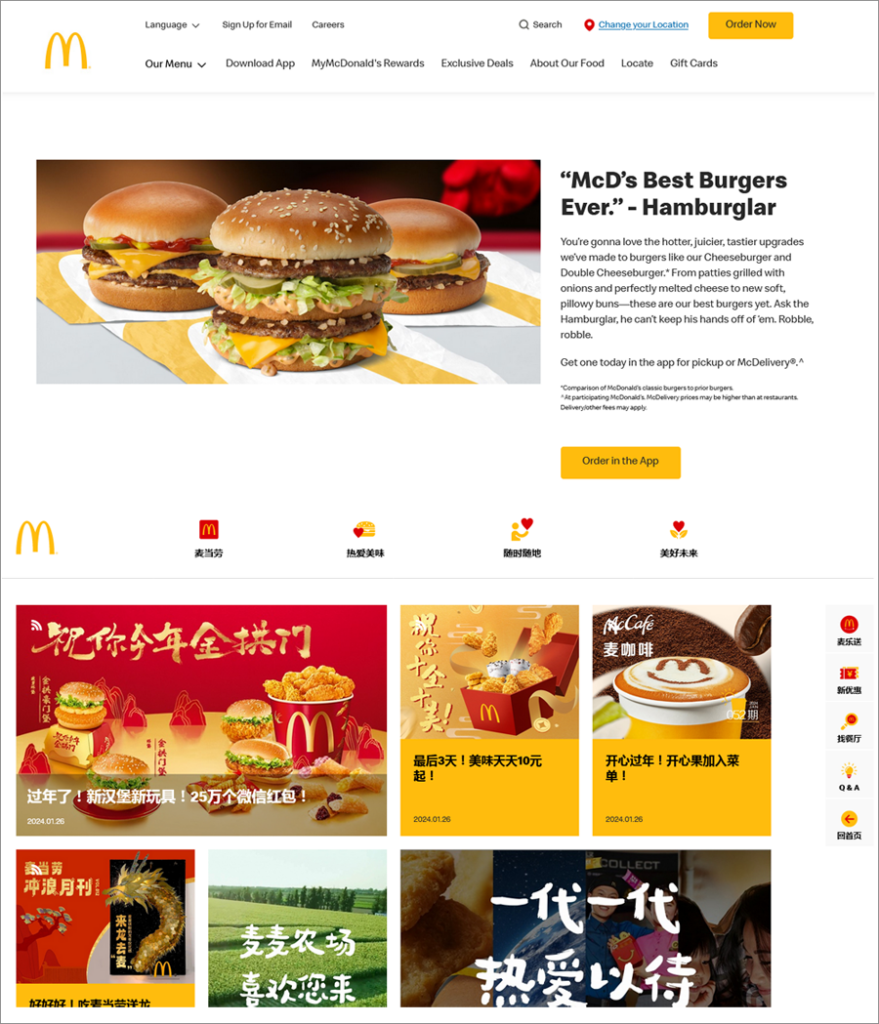In today’s global marketplace, having a website is crucial for any business aiming for international growth. However, a visually appealing website alone may not suffice if it fails to attract visitors. To thrive in the global market, it’s essential to optimize your website for international search engine optimization (SEO).
International SEO leverages organic search to connect with audiences in various countries and is a key component for global business success. This guide delves into international SEO, outlining its significance and the steps to craft a robust strategy for long-term benefits.
What Does International SEO Mean?
International SEO involves optimizing a website to enhance its visibility in search engines across different countries and languages. It helps search engines recognize your target markets and the languages your business uses to engage with customers globally. Whether you’re a fashion brand or an online store, international SEO is instrumental in increasing your website’s global reach.
Search engines like Google prioritize delivering search results that match the user’s language and location. International SEO ensures that your site’s content is deemed relevant for users in specific countries or for those searching in particular languages.
Selecting the right SEO package for international SEO involves finding a balance between global reach and local relevance, ensuring your strategy aligns with the unique needs of each target market.
How Does International SEO Work?
Implementing international SEO requires specific techniques to ensure that your website is accessible and comprehensible to users from diverse linguistic and geographic backgrounds. This includes employing tags and signals to inform search engines about the intended audience of your website, based on country and language preferences. Next, we’ll explore the steps necessary to effectively implement international SEO.
Keyword Research and Localization
Conducting extensive keyword research is pivotal for International SEO. This involves identifying significant keywords in local languages and understanding how people in different regions search for information. Localization transcends mere translation; it considers the cultural nuances of the target audience to ensure that the content resonates authentically with them.
Technical SEO
International SEO necessitates a robust technical SEO strategy to ensure that search engines accurately find and rank content from different countries. Implementing hreflang tags is crucial, as it informs search engines about the specific language and region a webpage targets, thereby avoiding issues related to duplicate content in multiple languages.
Content Localization
Adapting content to align with the local dialects, cultural preferences, and interests of each target audience is essential. This means using region-specific language, incorporating culturally relevant images and concepts, and addressing topics that resonate with the local audience.
User Interface Optimization
Optimizing the user interface is vital for global SEO success. This includes creating an intuitive website design with easily navigable features and offering language options. Allowing users to choose their preferred language rather than redirecting them based on location demonstrates respect for user preference and autonomy.
Social Media Integration
Integrating social media into your SEO strategy is crucial for global engagement. Understanding and leveraging popular social platforms in different regions enhances your ability to connect with international audiences. This approach ensures that your content is accessible and engaging for diverse global communities.
Mobile Optimization
In an era where mobile usage is prevalent worldwide, a key component of international SEO is ensuring websites are optimized for mobile devices. This involves creating responsive designs that adapt seamlessly to smartphones and tablets, enhancing the user experience. Tailoring these experiences to cater to regional preferences is also crucial.
Link Building
Effective link building in each target market is fundamental to establishing trust and authority for your website. Gaining backlinks from reputable local sources enhances online visibility and improves search engine rankings in specific regions. Collaborating with content creators in your industry from various countries, exchanging backlinks, and providing them with valuable content is integral to this process.
Monitoring and Iteration
Success in global SEO requires ongoing monitoring and refinement. Regularly analyzing your website’s performance in search results, user engagement, and competitor activities is essential. This data-driven approach enables continual adaptation and improvement of your international marketing strategies, ensuring sustained success across diverse global markets.
Also Read: The Ultimate Guide to SEO for Doctors: Dominate the Search Results!
What Makes International SEO Different From Local SEO?
While both international and local SEO aims to enhance a website’s visibility in search engine results, they differ significantly in scope and approach. International SEO focuses on tailoring content and strategies to appeal to audiences across multiple countries and languages. In contrast, local SEO concentrates on optimizing for a specific locality or region.
| Local SEO focuses on using specific keywords and reaching people in a specific location | International SEO is about focusing on keywords and groups of people in different parts of the world |
| Website is set up to attract people nearby | A broader method is used to appeal to different languages, cultures, and markets. |
| You can include details about the specific location, like the city or region, in your content and metadata. | In addition to language, international SEO also includes making content and website suitable for different cultures and preferences. |
| Make your website better for local searches by adding it to local directories and listings like Google My Business. | Makes sure that our sites follow the laws of different countries |
Understanding these distinctions is vital. International SEO ensures that search engines recognize the global relevance of your content, presenting the appropriate version of your site to users in different countries. This enhances the user experience for your international audience by providing them with regionally relevant content.
Why Is It Important for Businesses Worldwide to Do International SEO?
If your competitors are not optimizing their content for specific countries or languages, capitalizing on this gap with effective international SEO can give you a competitive edge. This approach not only drives more traffic to your website but also strengthens your market position. Let’s delve into the key benefits of international SEO for businesses aiming for global growth.
Reach More People
The Internet opens doors to a vast, diverse audience worldwide. International SEO allows businesses to target specific markets and languages, tapping into new customer bases across the globe. This broader reach can increase website traffic, enhance brand recognition, and potentially lead to increased sales in various regions.
Get More Traffic and Conversions
Appearing in search results for relevant keywords across different languages and regions can significantly boost website traffic without reliance on paid advertising. Effective international SEO attracts users actively seeking products or services in their native languages and regions. This targeted approach can lead to higher conversion rates, increasing revenue and fostering business growth.
Improve Brand Visibility Globally
Establishing a strong online presence in various international markets elevates your brand’s global recognition and trust. Consistent visibility in search results, tailored to users’ languages, cultivates trust and credibility. Satisfied customers who recognize and value your brand are more likely to remain loyal and recommend your products or services, propelling brand growth in the global marketplace.
Adapt to Global Trends
Monitoring and adapting to the preferences, search behaviors, and emerging trends of different countries enable companies to refine their online strategies to meet the evolving needs of diverse populations. This agility is crucial in the dynamic digital landscape. International SEO positions businesses to engage with a global audience effectively, leveraging popular search terms and seizing new opportunities in various markets. By staying current and relevant, businesses can ensure their online presence resonates with a diverse international audience.
Be Culturally Relevant
Recognizing and respecting cultural differences is crucial in international SEO. This involves tailoring online content, keywords, and strategies to align with the cultural nuances of various regions. When businesses demonstrate an understanding and appreciation of diverse cultures, they enhance the user experience, fostering trust and connection.
International SEO goes beyond mere translation; it encompasses adapting to cultural preferences and norms to ensure content resonates authentically. This approach enables brands to show cultural awareness, thereby improving visibility in international markets.
How to Create an Efficient International SEO Strategy?
Having grasped the basics, let’s explore how to formulate a robust international SEO strategy. Begin by assessing your website’s current standing:
Find current organic traffic of your site from various languages and countries: Utilize tools like Google Analytics to understand your website’s traffic and sales performance across different countries and languages.
Check how easy it is for people in other countries to find your website through search engines: Employ Google Search Central or similar platforms to ascertain search trends and the visibility of your pages in your target markets.
With this data, address the following key questions to shape your international SEO strategy:
- Which places do you want to focus on?
- What languages do the people you want to sell to speak?
- How will you adapt the website for different languages and cultures?
Plan Your Goals for International SEO
Establishing clear objectives is essential for an effective international SEO strategy, especially when targeting an international audience. Specific goals guide your efforts and enable you to measure progress.
Increasing traffic: Aim to attract more visitors from various countries by enhancing your website’s visibility and comprehension by search engines through international SEO.
Generating leads: Engage potential customers by optimizing your website content, copy, and design. Ensure your website appeals to diverse international audiences.
Increasing your sales: Utilize international SEO to educate and engage both potential and existing customers. A well-executed strategy can naturally lead to an increase in sales over time.
Analyze the Market and Competition
Once your international SEO goals are established, delve into market research and competitor analysis. Understanding the preferences and behaviors of your audience in different countries or regions is crucial. Additionally, observing your competitors’ SEO strategies can offer insights into how to differentiate your offerings in each target market.
Conducting a thorough analysis of local markets and competition is essential. This involves assessing demand for your product or service, identifying other sellers, and analyzing their online marketing strategies. It’s vital to understand the intricacies of each market to develop effective strategies.
This process includes extensive keyword research tailored to each location, recognizing local search trends, and adhering to regional norms and regulations. Understanding how people in different regions use mobile phones and social media is also key for refining your strategy. Tailoring your content to align with the language and cultural context of your target audience is imperative.
Additionally, focusing on acquiring more backlinks in each market and continuously monitoring performance is essential for sustained success. This meticulous approach ensures that your SEO strategies are finely tuned to the specific needs of diverse global markets.
Perform Keyword Research for Your Target Audience
Keywords play a pivotal role in SEO, including international SEO. To effectively connect with audiences in different regions, it’s important to conduct thorough keyword research.
This research helps identify the terms and phrases used by people when searching for products or services like yours in various markets. With this knowledge, you can create content and web pages optimized for these keywords in the appropriate language.
Keywords should be culturally and linguistically adapted, not just translated verbatim. While some terms may require careful localization, others, particularly in industries like medicine or IT, often remain in English globally. A direct translation of these terms might not be necessary.
For instance, cultural variations, such as the different dates for Mother’s Day in the US and UK, mean that people in these countries search for related products at different times. Such nuances should inform your keyword strategy.
Utilize tools like Google Ads’ Keyword Planner to gauge the search frequency of specific terms in your target countries. This data can then inform the keywords you integrate into your international SEO strategy.
Also Read: Mastering SEO for SaaS in 2024: Your Essential Success Guide
Choose Whether to Focus on Country or Language Targeting
International SEO strategies vary significantly based on your business goals, target audience, and available resources. When targeting an international audience, you can focus either on their language or their location.
Country targeting: When each target country has a distinct language, focusing on specific countries is more effective. This approach requires separate websites for each country, with content tailored to the respective language and culture.
Language targeting: If your target audience speaks the same language across different countries, language targeting is a viable option. This allows you to create content in one language for multiple markets. For example, Spanish content can target Spanish speakers globally. Similarly, for Portuguese speakers, you can opt for country-specific targeting in Brazil and Portugal, creating distinct Portuguese content for each.
While ideal, focusing on individual countries for maximum audience connection may depend heavily on your budget and technical capabilities.
Select the Correct URL Format for Your Website
Using distinct URLs is essential to avoid confusion between original and translated content. Different URL structures cater to diverse language and country targeting needs. Here are the most common types:
Country Code Top-Level Domains (ccTLDs)
For targeting specific countries, ccTLDs like site.es (Spain) and site.fr (France) signal search engines to display these sites to users in the corresponding countries. However, this approach is typically the most costly and time-consuming. Each ccTLD requires a separate PR strategy, content marketing, and link-building efforts, without the benefit of shared domain authority or links from other sites.
Global Top-Level Domains (gTLDs) With Subdomains
Using gTLDs with subdomains, such as de.site.com, can effectively target specific regions while promoting brand recognition. However, this method involves complex technical setup and maintenance, and there may be challenges in ensuring search engine visibility for subdomains.
Global Top-Level Domains (gTLDs) With Subfolders
For businesses where the audience’s location is less relevant, using a single domain with subfolders for different languages or countries (like site.com/es/) is a viable approach. This method is commonly used to address users in a single market who speak various languages or in regions where multiple countries share a language, such as Spanish-speaking Latin America.
Global Top-Level Domains (gTLDs) With Subdomains and Subfolders Together
Employing gTLDs with both subdomains and subfolders (e.g., es.site.com/es-mx/) can effectively structure a website. Subdomains can target specific regions, while subfolders organize content under the main domain. This setup offers improved marketing and easier navigation, enhancing the site’s relevance for particular user groups.
However, this approach has its challenges: it can complicate cookie sharing, consume significant server resources, result in lengthy URLs, and potentially impact search engine rankings. When considering the pros and cons of different URL structures, it’s important to align your choice with your business needs and future growth plans.
| URL | Advantages | Disadvantages |
| ccTLDs(site.com) | Strong signal given to search engines which simplify local ranking | Costly and every site has its own domain authority |
| Subdirectories(site.com/es/) | Easy to maintain | Search engine signal is weak |
| Subdomains(fr.site.com) | Much better maintenance than ccTLDs | Gives weak signal to search engines and domain authority can be weakened |
Use Hreflang Tag
The hreflang attribute specifies the language and geographic targeting of content. It is crucial to avoid duplicate content across different language versions of your website, such as English pages targeting the US, UK, and Australia. The hreflang attribute can be added to:
- The header part of your HTML code
- The XML sitemap
- The HTTP header section
Guidelines for using hreflang tags include:
- Refer to both the original page and its translated versions
- Use hreflang attribute references both ways
- Define the combinations of different languages used in specific regions correctly
- Always use hreflang=”x-default”
- Find the right hreflang attribute and the correct canonical URL
- Use full URLs when specifying the hreflang attribute
- Use only one way to implement the hreflang attribute
Add a Language Switcher and Navigation Menu
Ensuring your website features a user-friendly language switcher is crucial. Opt for clear, unambiguous language labels rather than flags, especially for languages like Spanish, which varies significantly across different countries. Flags may not accurately represent these variations.
A language switcher allows users to seamlessly switch the website to their preferred language, enhancing the site’s usability and appeal. This feature encourages users to spend more time on the website and reduces the likelihood of immediate departure.
Simultaneously, tailoring the navigation menu to accommodate international visitors involves clear organization and language-specific adjustments. This ensures users can easily locate information relevant to their language and region, thus improving overall user experience.
A well-designed language switcher and navigation menu are key to increasing your website’s discoverability and readability in various languages. These features not only enhance user experience but also aid search engines in efficiently indexing and ranking your site in different linguistic contexts. This approach aligns with best practices for online visibility and higher search engine rankings on a global scale.
Do Not Automatically Redirect Users to a Different Language According to Location
Automatically redirecting users to a language version based on their location or browser settings can be counterproductive. Such redirection can frustrate users and confuse search engines, potentially hindering access to specific content.
Instead, present users with a clear banner at the top or bottom of the page, informing them of alternative language versions and providing a direct link to the relevant page. While creating location-specific content is important, automatic redirection can diminish the user experience.
Users generally prefer to select their preferred language manually. Being automatically redirected to a different language can be disruptive. Offering a choice enhances user autonomy and ensures search engines correctly display and rank content according to language preferences. This approach significantly improves the effectiveness of international SEO and user satisfaction.
Tailor Content to Fit the Local Region and Culture

The goal is to ensure that the content on country-specific pages is relevant and engaging for the local audience. For example, content about winter clothing trends in Finland may not resonate with users in Uganda. Therefore, it’s crucial to create content that addresses the specific needs and interests of people in each target country.
Localization involves adapting content to fit local languages and cultural contexts. While hiring native content creators is one approach, it can be costly. An alternative is to utilize language experts who can adapt your content using online translation tools, such as a translation management system (TMS). TMS uses advanced technology to streamline the translation process, integrates with other digital tools for efficient workflow, and enhances the quality and speed of translations.
Having a Content Delivery Network (CDN)
Website speed is a critical factor in Google search rankings. Ensuring your website loads quickly worldwide is vital for higher rankings in regional search results. Fast-loading websites are favored by search engines.
A CDN can accelerate content delivery to users globally, whether they’re in Tokyo or San Francisco. By storing content closer to the user’s location, a CDN enhances website loading speed, improving user retention and satisfaction.
Build Links Locally to Your Site
Establishing local connections can significantly boost your website’s popularity and search engine rankings. Collaborating with popular online figures, contributing to relevant local websites, and featuring in local directories are effective strategies for building regional links.
For example, having numerous backlinks from “.fr” domains signals to Google the relevance of your site to users in France, potentially improving your position in local search results. Fostering community connections is vital for SEO impact, making it essential to develop a well-considered link-building strategy for each targeted region.
Leverage Customer Reviews and Social Media
Social media and customer reviews significantly influence your website’s search engine rankings globally. They not only strengthen your online presence but also validate your brand’s appeal to international audiences.
Social media platforms, such as Facebook, Instagram, and Twitter, are key for connecting with global audiences. It’s not just about brand recognition; it’s about forging genuine connections with potential customers.
Customer reviews are universally influential. People worldwide often read reviews before making purchases. Encouraging customers to share their experiences can greatly benefit your business. These reviews foster trust and reliability in potential customers. It’s important to utilize popular social media platforms in each region, like Facebook and Twitter in the US and WeChat in China.
How to Check the Performance of Your International SEO?
After you put your international SEO plan into action, it’s important to check how well it’s working and see if it’s helping your website. This will help you find ways to make things better and improve your plan even more. Let us look at the important keyword metrics to be monitored to find the performance of international SEO.
| Organic Traffic | Track the amount of people who visit your website from certain countries using tools like Google Analytics or other SEO platforms. |
| Keyword Rankings (Country Specific) | Monitor how your chosen words are ranking in different countries on popular search engines in order to improve your localized content. |
| Backlink Analysis | Evaluate how many and how good the links from different countries are, and make sure they are relevant and trustworthy to understand how strong your website is overall. |
| Localization | Determine what kind of content people in each country like the most, and see how well language tags and hreflang attributes work for targeting them. |
| Competitor Analysis | See how well you are doing compared to other companies in each country by looking at how often your keywords show up in searches, how many other websites link to yours, and how many people visit your site without clicking on an ad to find out what you’re good at and what you could improve. |
| Bounce Rates | Track the number of people who leave your website after looking at just one page and the amount of time they spend on your website in each country. |
| Conversion Rates | Find out how many people from different countries on the website actually do what you want them to do (buy something, fill out a form, etc.) and then express that number as a percentage. |
By keeping an eye on these numbers and studying them, you can learn important information about how well your international SEO plan is working. This can help you make smart choices to improve your website and succeed worldwide.
Wrapping Up
Optimizing your website for international SEO is pivotal for reaching a wider global audience. By understanding and catering to the nuances of your target demographic and employing effective international SEO strategies, you can attract more visitors, increase engagement, and boost sales.
International SEO acknowledges the diversity of global audiences, emphasizing the importance of adapting content and strategies to meet the needs of users in various countries and cultures. With technological savvy and cultural awareness, businesses can leverage global SEO to establish a strong online presence internationally.
Adapting your website to various languages and cultures, and continually monitoring its performance, will progressively enhance your global SEO efforts. Undoubtedly, international SEO is a key driver in expanding your business’s global customer base.
FAQs
How do I determine which countries to target with International SEO?
Identify countries where there’s a demand for your products or services and where you have the potential to grow. Analyze market trends, search behavior, and competition in those regions.
Is it okay for businesses to use the same content on different international websites to improve their SEO?
While some content elements can be universal, it’s essential to customize content to reflect local cultures, preferences, and language nuances for effective international SEO. This ensures the content is relevant and resonates with each targeted market.
Should companies make different websites for each country or region when doing international SEO?
Creating distinct websites for each region is one approach, but there are alternatives. Utilizing hreflang tags, crafting region-specific content, and a robust strategy for international audience engagement can effectively serve diverse markets without the need for multiple websites.
How does using local language affect international SEO?
Language localization involves tailoring content to the language and cultural context of a specific region. Providing users with culturally relevant experiences enhances engagement and improves search engine rankings.


























 RSS Feeds
RSS Feeds